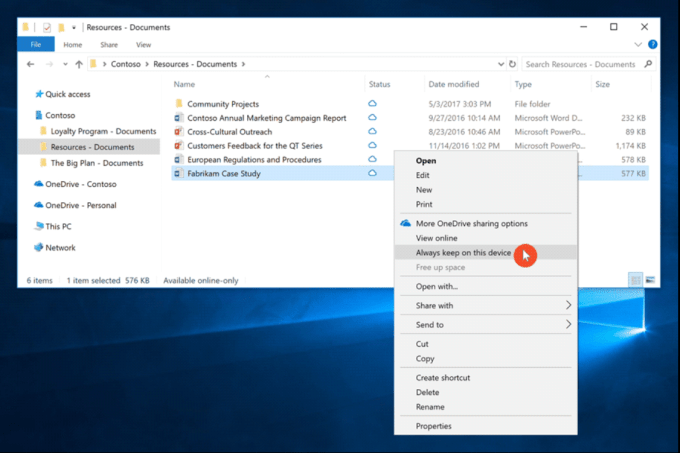

At Microsoft’s Build 2017 event today, the company introduced a new feature for the company’s cloud storage service OneDrive that will allow you to access your files without using up device storage. Called “Files On-Demand,” the feature will roll out along with the Windows 10 Fall Creators Update and will give users more control over which files are stored locally versus in the cloud.
The feature is basically Microsoft’s own take on Dropbox’s Smart Sync, as it lets you view all the files and folders directly in File Explorer, instead of only seeing those you’ve opted to sync to your device.
The idea is that the more you use online storage – creating files and uploading photos and working across multiple devices – the more you need to be able to see all your documents, and not worry if you had forgotten to sync something to your current device.
But while Dropbox’s Smart Sync was introduced as a feature for business users, OneDrive’s Files On-Demand supports your personal and work OneDrive accounts, as well as SharePoint Online team sites.

In addition, your OneDrive files won’t just be visible on your desktop, they’ll also be shown in the file picker when you’re using a Windows store application. When you select a given file from the picker, it will automatically download and open in the app – like a local file would.
The user interface in Windows 10 File Explorer will also be updated so you can better see which files are available on the device and in the cloud, thanks to the use of a small cloud icon in a column labeled “Status.” You’ll still be able to tell how much storage space the file will require if you choose to download it, as its size information is available in Explorer as well, even if the file isn’t yet on your device.

You can also choose to make certain folders or files always available offline with a right-click, then choosing “Always keep on this device” from the menu.
However, you generally won’t have to go through this process – it’s only really necessary if you know you’ll be spending a lot of time offline and don’t want to lose access to your more critical folders and files. Most times, while you’re connected to the internet, you can just double-click files and usual to open them into an app, and the file will automatically download to your device.

The feature has another benefit for larger organizations using SharePoint Online team sites – it will reduce the network bandwidth by reducing the continual syncing that occurs today when changes are made.
At present, when anyone makes a change, files are re-downloaded on all synced devices. This is no longer necessary, as the files in their updated format will be available whenever the user clicks them.

While Files On-Demand works well on desktop devices, on mobile, connectivity is often more of an issue. Microsoft addressed this by introducing a new option that will allow users to save entire folders to your mobile device, so you can open the files they contain once you have a connection again. Changes others make to those files while you’re offline will be automatically updated once you’re connected again.
This feature is available now on Android for Office 365 Personal and Home subscribers and OneDrive business accounts. iOS users will receive the update in a few months.
However, iOS users can today use OneDrive with iMessage. You can share an entire folder or file directly within the iMessage interface. These documents and photos can also be instantly previewed here, through this new integration.
[“Source-techcrunch”]

